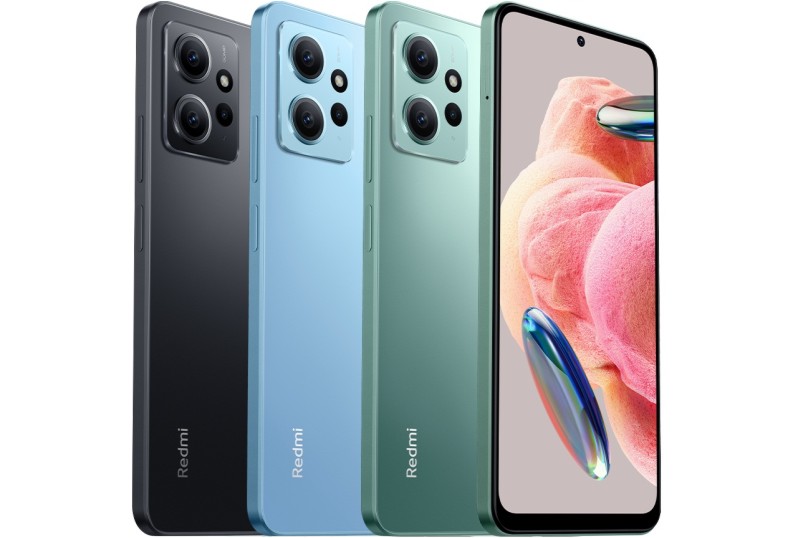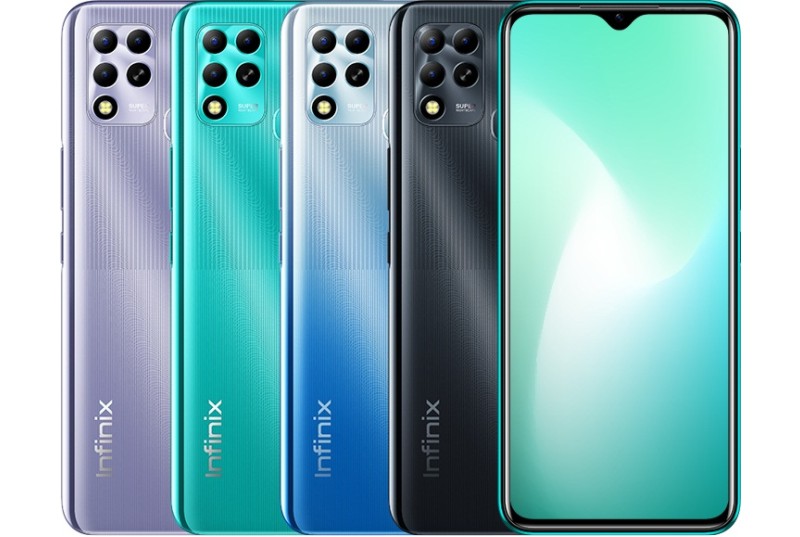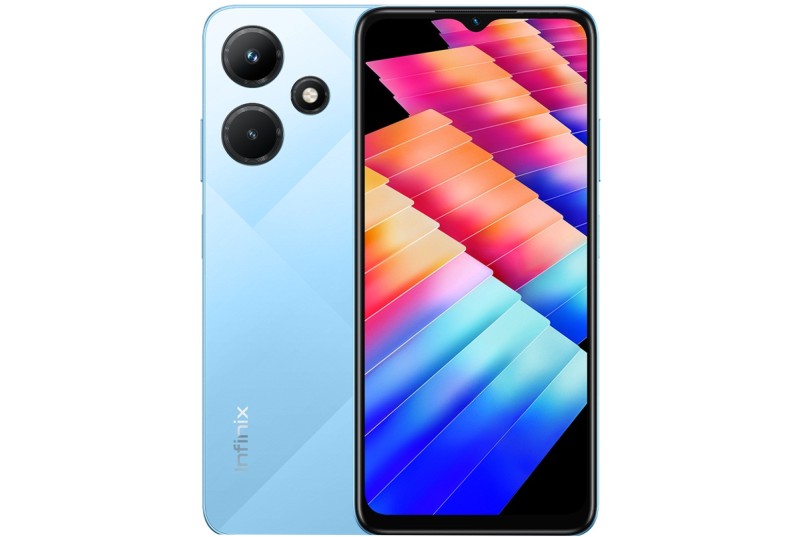Xiaomi Redmi A3 (23129RN) Review, Price And Specifications.
Xiaomi Redmi A3 (23129RN) Quick Specs.
Display: 6.71" HD+ (1650×720) Drop-Notch, 90Hz IPS-LCD Display.
Software: Android 14 (Go Edition) OS, MIUI.
CPU: MediaTek Helio P35.
RAM: 3GB/4GB (Plus up to 4GB of Virtual RAM).
Storage: 64GB/128GB (Expandable to 1TB).
Rear Camera: Dual-lens (8MP+AI).
Front Camera: Single-lens (5MP).
Security: Face Unlock, Side-mounted fingerprint reader.
Port: USB Type-C.
Network: 4G.
Battery: 5,000mAh.
Starting Price:
₦98,000, GH₵ 962, KSh 13,500, UGX 343,400.
Xiaomi Redmi A3 (23129RN) is slightly bigger and wears a classier looks than the Redmi A2 (23028RN). The latest phone also has a better build quality.
Though the camera set-up remain the same, photos taken with the new phone look better. Redmi A3 is also pre-installed with the latest Android OS, and the phone's base variant is equipped with higher RAM and higher storage space. However, due to a similar CPU, the performance of the Redmi A3 is similar to that of its predecessor.
And when compared to a few other low-end android phones (especially the ones at this price point), Redmi A3 is set apart by its unique design and premium build quality. It also has a better-looking display and impressive camera system. Redmi A3 also features Android 14 (Go Edition) OS; a rarity at this price point.
And when it comes today to day-to-day usage and regular tasks, such as multitasking and video streaming, Redmi A3 is as smooth as the main contenders. However, the phone falls slightly behind them when it comes to demanding tasks like gaming. Because it is fitted with a little less beefier CPU.
Another thing that Redmi A3 trades for its unrivaled selling points (design, display, build quality and camera) is RAM and storage configuration. Because the main contenders offer twice storage space and slightly higher RAM at the price of the A3 base model.
Main Contenders:
At the price of the base model of the A3, Tecno Pop 8 and Infinix Smart 8 offer twice storage space, higher RAMs and higher megapixel cameras. Both of the phones also features slightly better CPU.
Nonetheless, unlike the A3 that features Android 14 Go Edition (even with the promise of future OS updates), the two contending phones come with Android 13 Go Edition. Also as as i mentioned earlier, Redmi A3 sports a more appealing looks and has a better build quality than the two phones. Furthermore, the bigger display of the A3 is a little brighter and looks prettier than the ones on the two phones. Even, in spite of its lower megapixels cameras, Redmi A3 was able to deliver better looking photos than the two phones.
NOTE: As a result of its different processor, the recently unveiled Xiaomi Redmi A3X delivers smoother performance than the Redmi A3. However, all other attributes (looks and specs) of the recent phone are exactly like those of the A3.
Design Colours And Price:
When it comes to texture finish, Redmi A3 is available in two variants. The leather-like variant and glassy variant.
And while the leather-like variant has only one colour options of Forest Green (Olive Green), the variant with glassy back cover is available in two colour options of either Midnight Black or Star Blue (Lake Blue).
Currently, the price of the base (3GB/64GB) model of the phone is about 98,000 naira.
Premium Design And Build:
As i mentioned, Xiaomi Redmi A3 is set apart by its unique design and premium build quality.
While most of the recent budget phones are featuring the same familiar sleek design, Redmi A3 sports a more refreshing and classier looks. Even, despite having a tear-drop notch (compared to the camera cut-outs on the main contenders), Redmi A3 still looks more appealing.
The more appealing looks is basically as a result of its flatter frame and flatter back cover (Just like those of the recent Samsung Galaxy A05). The flatter attributes also make the phone to look compact (in spite of its bigger size).
Another thing that enhances the beauty of the A3 is its distinct circular camera bump.
In this time, when most of the recent budget phones (including the main contenders) are featuring rear camera bumps that look like those of the iPhones, it's refreshing to see an elegant looking circular camera bump on the back of the A3. And the bump is neatly placed on the upper part of the phone's back cover.
In addition to its classier looks, another impressive thing about A3 design is its build quality. This phone is well put together than virtually all other low-end budget phones.
For instance, unlike most of others, Redmi A3 comes with Corning Gorilla Glass 3 on its front and a glassy (or polycarbonate) material on its back. Even, as i said earlier, the phone is also available in leather-like back cover.
Nonetheless, like other budget phones, A3 has plastic frame. The rest of its physical attributes are also similar to those of the competitions. Though, the arrangements of ports and buttons are slightly different.
Because while most of the budget phones have their speakers and 3.5mm audio jacks placed on their bottom edges, these two features are found on the top edge of the Redmi A3. In other word, you only have a USB Type-C port and microphone on the bottom edge of the phone.
Still, as usual, the power button (which also doubles as a fingerprint reader) and volume keys are on the right edge of the phone. While its 4G Dual-nano SIM slot (and tray) is also located on the left edge.
Big And Pretty 90hz Display:
Though, like the ones on the competitions, the 6.71-inch screen of the Redmi A3 is a 720p IPS-LCD panel, with support for 90hz refresh rate, but in addition to the fact that the screen is bigger than the 6.6-inch that accompanied the contenders, it also has better colour reproduction and better white point. In short, the colour reproduction of the A3 display is almost on par with those of the more expensive Redmi 13C and Samsung Galaxy A05.
The screen vibrancy is also similar to those of the two more expensive budget phones. In other words, the peak brightness of this screen is a little higher than those of the competitions. As a result, it's slightly clearer under direct sunlight. Even, there's a dedicated "Outdoor Mode" (which boost the screen brightness level when you're outside) in the display settings.
And, due to its vibrancy and better picture qualities, media contents look more appealing on the screen of the Redmi A3, compared to those of the competitions.
Therefore, and in addition to the fact that it's hard to find another phone at this price point that offers Corning Gorilla Glass protection, it's also hard to find one with a better looking display.
Impressive Photography:
In addition to its design and display, photography is another selling point of the Xiaomi Redmi A3. Though the phone comes with a 5-megapixel front camera and an 8-megapixel dual rear camera. Which is lower than the 8-megapixel front cameras and 13-megapixel dual back cameras on the main contenders, yet photos taken with the Redmi phone look better.
Firstly, and in spite of their lower megapixel, photos taken with both the front and rear cameras of the A3 still have the same level of sharpness and details as the ones taken with the competitions. Even, photos taken with the Redmi phone appear a little more clearer.
Though, like the ones on the competing phones, you still need good lighting conditions to get optimum results from this phone's camera. Notwithstanding, under normal lighting conditions, A3 still managed to take clearer shots than most competitions.
Secondly, photos taken with the Redmi A3 also have better colour representation. Although the shots still have saturated colours, like the ones from the competitions, yet colour accuracy is more better.
Even, in spite of the saturated colours, the warm tone that affect photos from the competitions are minimal on those of the A3.
In shot, if not because they are slightly less detailed and have slightly saturated colours, photos taken with the Redmi A3 can be easily passed for the ones taken with the Samsung Galaxy A05 and Redmi 13C.
Also, in spite of their lower megapixel sensors, the front and rear cameras of the Redmi A3 can still shoot videos up to 1080p at 30fps (frame per second), like those of the competitions.
Latest Software, Average Performance:
Normally, low-end budget phones at this price tag are made for basic tasks and light games. Because they always features low-tier CPUs. And Xiaomi Redmi A3 is not an exception. Even, as i mentioned earlier, the CPU inside this phone is a little less beefier than the one inside the main contenders. Because while the main contenders are fitted with the Unisoc T606 processor, Redmi A3 features Helio P35 MediaTek processor.
Though both of these CPUs are low-tiers processors, and they're not meant for graphics demanding tasks such as gaming, still, T606 (that's inside the competitions) packs a slightly beefier processing power than the Hello P35 of the Redmi A3. Besides, T606 is the newer of the two CPUs.
Nothwistanding, when it comes to day-to-day usage and basic tasks, the performance of the Redmi A3 is like those of the ones with T606. The Redmi phone is as smooth and as responsive as them.
Yet, as i mentioned, the contenders handle demanding tasks, like gaming, a little more better than the A3.
Still, it should be emphasized that A3 is not a gaming phone, neither the contenders with T606.
But, what Redmi A3 lacks in processing power, it makes up for it in software. Because while the competitions, and most of other phones at this price point, are still coming with Android 13 (Go Edition) OS, Redmi A3 was pre-installed with Android 14 (Go Edition). The Redmi phone also comes with an assurance of up to two years of Android OS updates (unlike those phones).
However while the more expensive phones from Xiaomi Redmi are running on the full version of the latest MIUI 14.0.5 Skin. A3 comes with the stripped version of the latest custom UI. This is to ensure consistence smooth performance of this low-end phone.
Meanwhile, the RAM and storage configurations of A3 is similar to those of other budget phones. A3 is available in 3GB/64GB variant and 4GB/128GB variant. It is even available in an higher RAM configuration of 6GB/128GB.
Standard Battery And Charging:
Though the micro-USB port on the previous model has been replaced with a USB Type-C port on the A3, but USB Type-C is also what you get on the competing budget phones. Also, like its predecessor and most competitions, Xiaomi Redmi A3 is powered by a 5,000mAh battery and features 10W (or standard) charging.
And with its out-of-the-box 10W adapter, it will take you a little over three hours, to fully charge Xiaomi Redmi A3 battery from zero percent.
Xiaomi Redmi A3 (23129RN) Full Specs:
GENERAL
Maker: Xiaomi Redmi.
Name: A3 (23129RN).
Year Released: February, 2024.
Dimensions: 168.4x76.3x8.3mm
Weight: 193g.
IP Rating: N/a.
Colour: Midnight Black, Star Blue (Lake Blue), & Forest Green (Olive Green).
DISPLAY
Screen Type: IPS-LCD capacitive Touchscreen.
Size and Resolution: 6.71-inch, HD+, 1650-by-720 pixels, 90Hz (high) Refresh Rate.
Aspect ratio & Pixel Densities: 20:9, 268PPI.
Protection: Corning Gorilla Glass 3.
PORTS:
3.5mm Audio Jack: Yes.
USB Type-C Port: Yes.
MicroUSB port: No.
Lightning Connector: No.
Google Assistant Button: No.
PERFORMANCE
Chipset: MediaTek Helio P35, 12nm Octa-Core Processor, 2.2GHz.
GPU: PowerVR GE8320.
RAM: 3GB/4GB (With up to 4GB of Virtual RAM).
Operating System: Android 14 (Go Edition), MIUI.
STORAGE
Internal Storage: 64GB/128GB.
Micro-SD card slot: Yes, up to 1TB (One Terabyte).
SIM AND NETWORK
SIM: Nano, Dual SIM slots.
Network: GSM, HSPA+, & LTE.
CAMERA
Rear camera: Dual-lens; 8MP +AI, Dual-Flash.
Front camera: Single-lens, 5MP Dual Front Flash.
VIDEO RECORDING:
Rear Cameras: 720p, 1080p @ 30 fps.
Front Camera: 720p, 1080p @ 30 fps.
CONNECTIVITY:
Wi-Fi, Bluetooth 5.4, HotSpots, USB-OTG.
BIOMETRIC, SENSORS & LOCATION:
Security: Face Unlock, Side-mounted fingerprint reader.
Sensors: Ambient light, Virtual Proximity, G-sensor, Accelerometer And
Barometer.
Others: GPS, Location (Geo, Glonass), Beidou.
BATTERY
Battery Capacity: 5,000mAh.
Qi Wireless-Charging: N/a.
Fast Charging: 10W (Wired).



.jpg)





